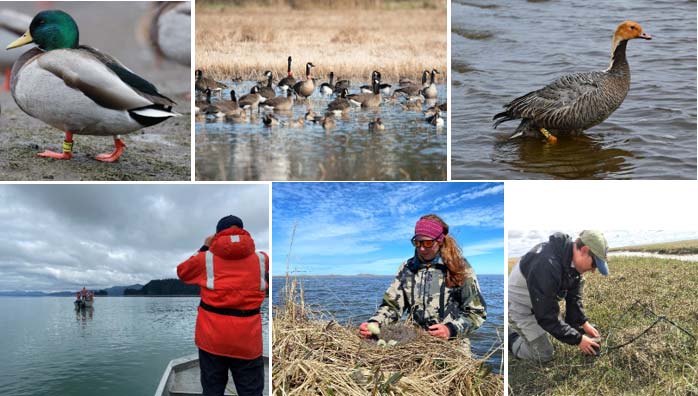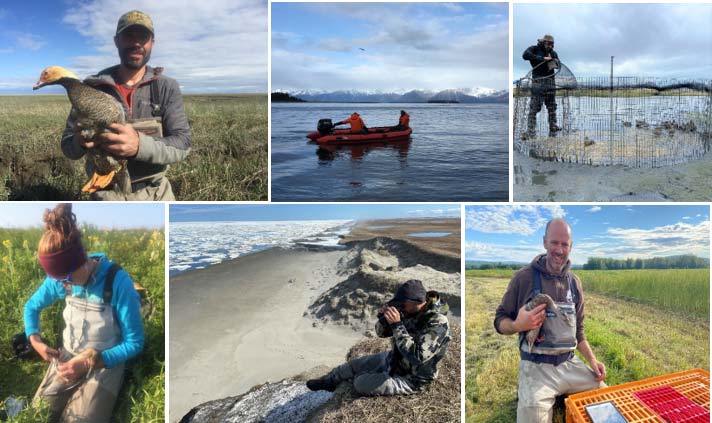Wildlife Management & Research
Waterfowl
Alaska's extensive wetlands and marine waters support a wealth of waterfowl species. ADF&G maintains a waterfowl research and management program to cooperatively manage migratory game birds (ducks, geese, swans, cranes, and snipe) with the U.S. Fish and Wildlife Service through the Pacific Flyway Council. Active management and research projects include:
- Using satellite telemetry to describe annual movements and survival of juvenile and adult female Emperor Geese.
- Breeding ecology and population size of Emperor Geese on the Seward Peninsula, Alaska.
- Using diet analysis to estimate carrying capacity of island nesting Dusky Canada Geese and investigating management options for increasing recruitment.
- Banding and surveys to monitor the population of Dusky Canada Geese nesting on the Copper River Delta and Middleton Island.
- State agency cooperative monitoring of distribution and survival of Tule Greater White-fronted Geese in the Pacific Flyway.
- State and federal agency cooperative study estimating annual survival of threatened-status Spectacled Eiders during a period of low sea ice in the Bering Sea.
- State and university cooperative study of the predator-prey dynamics of Brant and foxes.
- Tracking Surf and White-winged Scoters using satellite transmitters to delineate populations and inform monitoring programs.
- Pre-season duck banding to inform regulatory decisions for harvest models.
- Describing local movements and annual survival of Mallards in the Anchorage area.


